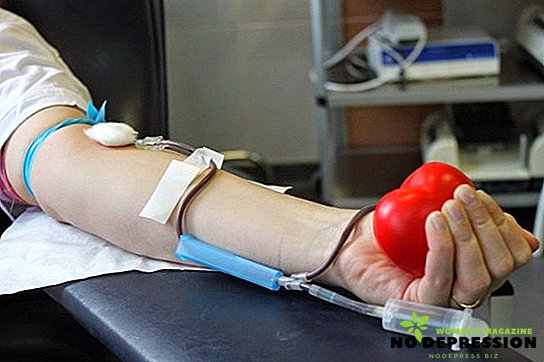The method of measuring basal temperature is very popular among women. It is used as one of the methods of contraception, and, on the contrary, not to miss ovulation. In pregnancy, the basal temperature may be one of the earliest signals of pathology.

What is basal temperature?
Basal temperature is called the rectum. It may be slightly higher than the temperature in the armpit by a few tenths of a degree or coincide with it. In men, this indicator is more or less stable, in women it varies depending on the phase of the menstrual cycle or pregnancy.
It should be remembered that the basal temperature indicators have a wide range of individual differences, so this method becomes the most informative for daily measurement.
A single increase or decrease in temperature has no diagnostic value. That is why many ladies maintain a basal temperature schedule for several months or years.
How to measure it?
For measurements using a special rectal thermometer, which can be electronic or mercury. The readings of a mercury thermometer are considered more accurate, but the electronic one is safer to use.
You can use the usual thermometer, but it is less convenient. The device is inserted into the anus 2-3 cm, the time of temperature measurement - 5-7 minutes. During the procedure, you need to lie on your side, it is desirable to avoid unnecessary movements.
Temperature is measured in the morning (best of all - up to 8 hours), with the same thermometer at the same time. This is very important for the results to remain informative.

These rules are the same for women of any age in all phases of the cycle and during pregnancy at any time. It is not necessary to observe the measurement time with an accuracy of a minute, deviations in half an hour will not significantly affect the result.
The observation period for basal temperature is 4 menstrual cycles or more. Only in this case can we draw any conclusions from the information received, calculate the individual range of oscillations during the cycle, judge possible pathology, if it has arisen.
In order for the data to be reliable, you need to go to sleep, put a thermometer next to you, set an alarm clock, and measure the temperature immediately after waking up. Then you need to record the result (notepad and pen can be immediately put next to the thermometer), after which you can go back to sleep.
During pregnancy, the most valuable information is provided by indicators in the early stages (1-2 weeks), then their significance decreases.
Graph of basal temperature during pregnancy to a delay
Despite the fact that the values of BT are individual, there are general trends by which you can track the processes occurring in the female reproductive system. The lowest temperature is observed in the last days of menstruation and immediately after it.
Then, during the entire first phase of the cycle, a gradual increase in BT occurs, the maximum is 2-3 days after ovulation. Immediately before the egg is ready for fertilization, the temperature may drop (not all women are observed). Then there is its slow decline.

If conception has come after ovulation, the graph curve will go down sharply when it should be at its peak, low values will hold for several days, then a systematic increase in basal temperature will begin. This is one of the early signs of pregnancy, which allows to determine it before the delay.
Additional signs will help to more accurately determine the onset of pregnancy - bloody discharge from the vagina a little earlier than the expected monthly periods (implantation bleeding), a slight deterioration in health. All these symptoms occur before the delay, but may not be pronounced.
Graph of basal temperature during pregnancy
 As already mentioned, the most informative graph of basal temperature in the first 2 weeks (until the delay). But sometimes there is a need to measure this indicator for 12 weeks or before delivery.
As already mentioned, the most informative graph of basal temperature in the first 2 weeks (until the delay). But sometimes there is a need to measure this indicator for 12 weeks or before delivery.
Measuring BT is a simple, affordable and minimally invasive way to monitor the condition of the fetus. It is not accurate enough, but it allows us to observe the development of the future baby in dynamics and in time to determine the pathology.
The rules of measurement in the early stages remain the same as before pregnancy. It is necessary to record the indicators in the morning, at the same time, immediately after waking up, but not getting out of bed (to do this, put a thermometer, notebook and pen near the bed), be sure to build a graph for clarity and take measurements every day.
Starting from the third week (when the delay becomes apparent), the temperature is kept steadily high. Despite the fact that the norm in this case is relative, if the thermometer showed less than 37 °, then it is worth contacting the gynecologist.
In the future, a consistently high level of basal temperature is maintained, normally it ranges from 37 ° to 38 °, if the value is above or below the specified corridor, this can be an alarming sign.
A slight decrease is possible at week 11, but not necessarily. Here, the lower limit of the norm is 36.9 °.
 On the twelfth week, the figures return to the value of previous periods. At later stages, BT measurements are usually not performed, although the gynecologist may recommend that the procedure be continued at the risk of premature termination of pregnancy.
On the twelfth week, the figures return to the value of previous periods. At later stages, BT measurements are usually not performed, although the gynecologist may recommend that the procedure be continued at the risk of premature termination of pregnancy.
If a woman continues to measure before giving birth, she may notice that BT begins to rise 1-2 days before the birth of the baby. But in this case there are more obvious signs and precursors that appear earlier and are more informative.
Increased or lowered basal temperature - what does this mean?
Despite the fact that normal indicators of BT are individual, there is a range of values in which fluctuations do not pose a threat to the health of the mother and baby.
As already mentioned, it is 37-38 °. In some periods of pregnancy, the temperature rises, in others - decreases, but if it remains within the specified limits, there is nothing wrong with that.
The diagnosis on one basis is not accurate, but a woman, if she noticed such a feature, needs to be told to the gynecologist about this. Especially dangerous is the sharp drop in BT below the normal value.
 High internal temperature (above 38 °) is an indicator of the inflammatory process. In this case, it is accompanied by an increase in overall body temperature, general malaise, and other symptoms of the disease.
High internal temperature (above 38 °) is an indicator of the inflammatory process. In this case, it is accompanied by an increase in overall body temperature, general malaise, and other symptoms of the disease.
But there is another reason for increased performance - incorrect measurement or physical activity before the procedure, errors in diet, sex. Therefore, if BT keeps high, but the woman feels well, there is nothing to worry about.
In general, it is important to remember that a one-time change in the indicator, even if it is outside the normal range, is not dangerous, a sign of pathology is a steady decrease or increase in BT for 4-5 consecutive measurements.
Examples of graphs of basal temperature during pregnancy
This is how the basal temperature graph looks like until the delay is normal:

On this graph, you can clearly see all three phases of change in BT. Phase 1 - the normal first half of the cycle before ovulation, the second corresponds to ovulation and conception, the third - implant recession and the subsequent temperature rise, which can determine the pregnancy before the delay.
On the graph, the letter M marks the days of menstruation, O - ovulation, B - the time when pregnancy is determined.
A few more examples of basal temperature graphs can be seen below.


A few more tips on basal temperature determination are in the next video.












